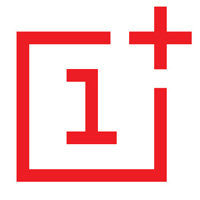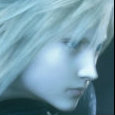Q
What is the safety rating of the Toyota Mark X?
The safety rating of the Toyota Mark X typically depends on various factors and the specific testing criteria. In general, the Mark X has several safety features that improve overall safety. It is equipped with seven airbags, which can protect the occupants under collision from multiple directions. In addition, it is equipped with vehicle stability control and traction control systems, which can help maintain vehicle's stability during challenging driving conditions, such as on slippery roads or when sudden maneuvers are needed. Additionally, its pre-collision safety system include active headrests. It also has all- new radar cruise control system which can maintain a safe distance from the vehicle ahead, and an intelligent adaptive front lighting system to enhance visibility at night. These features work together to improve driving safety, helping prevent accidents and protect passengers when incidents occur.
Special Disclaimer: This content is published by users and does not represent the views or position of PCauto.
Related Q&A
Q
Does Mark X consume lots of fuel?
The fuel consumption of the Mark X cannot be generalized, as it is influenced by various factors. Regarding the vehicle's condition, proper engine maintenance—such as timely spark plug replacement and keeping the intake system clean—typically results in normal fuel efficiency. Conversely, issues like carbon buildup in the engine or underinflated tires may increase consumption.
Driving habits also significantly impact fuel usage. Smooth acceleration, avoiding sudden braking, and maintaining steady speeds help reduce consumption, while aggressive throttle input or high-speed driving will increase the consumption. Road condition is also an important factor, frequent stop-and-go traffic inevitably increases the fuel consumption compared to highway or smooth-road driving.
Therefore, the Mark X may don't consume lots of fuel. With proper maintenance, good driving habits, and appropriate route selection, its fuel consumption can be effectively managed.
Q
What's the transmission fluid capacity of the Toyota Mark X
Sorry, there is no exact information regarding the specific transmission fluid capacity of the Toyota Mark X. The required amount can vary depending on factors such as the vehicle model, transmission type, and design. Generally speaking, there are two common methods for changing transmission fluid: the gravity drain method, which typically requires less fluid, and the exchange machine method, which enables a more thorough fluid replacement but uses more fluid.
For accurate transmission fluid capacity details, I recommend consulting your vehicle's owner's manual, which should contain comprehensive specifications. Alternatively, you could contact an official Toyota dealership - their technicians can provide precise data based on your specific vehicle configuration.
Please note that regular transmission fluid changes are crucial for maintaining optimal transmission performance and longevity. Always follow the manufacturer's recommended service intervals and use the specified fluid grade.
Q
What type of oil does the Toyota Mark X use?
It's recommended to use Toyota Genuine Oil for Toyota Mark X, with specifications including 0W-20, 5W-20, and 5W-30. The 0W-20 is a full synthetic oil that offers excellent low-temperature fluidity, ensuring smoother cold start in frigid climates while improving fuel efficiency. The 5W-20, is also a good choice as the full synthetic oil, providing reliable low-temperature performance and engine protection suitable for most driving conditions. Meanwhile, the 5W-30 is a semi-synthetic oil that performs well across broader climate ranges, delivering stable lubrication and protection under high temperatures.
When selecting engine oil, consider your driving environment and usage purpose. For colder regions, 0W-20 is ideal, while 5W-20 or 5W-30 may be preferable in moderate climates or for high-mileage vehicles. Additionally, high-quality third-party oils that meet the engine's requirements can also serve as viable alternatives.
Q
How many airbags is Mark X equipped with?
Sorry, there is no specific information about the number of airbags equipped by the Mark X. Airbags are one of the important safety features in vehicles,which can pop out quickly during a collision, providing cushioning protection for occupants and reducing the risk of injury. The number of airbags varies across models of different years, versions, and trim levels. Generally, common automotive airbags include front airbags for the driver and front passenger, side airbags to mitigate injury during side impacts, and some models feature curtain airbags to protect front and rear occupants' heads. For precise information about the number of the Mark X's airbag, please refer to the vehicle's owner's manual or consult a Toyota dealer.
Q
Is Mark X equipped with V6 engine?
The Mark X is equipped with V6 engine. Some versions of the Toyota Mark X are equipped with V6 engine, such as those featuring the 5GR-FE, 3GR-FE, and 4GR-FSE engine codes. The V6 engine delivers robust power, enhancing the driving experience. Its structural design ensures smoother operation compared to some four-cylinder engines, showing more smooth power delivery. Additionally, V6 engine offers strong performance reserves, making it well-suited for both city driving and highway overtaking.
Different V6 engines vary in power and torque specifications, so it's recommended that buyers should choose the Mark X model that meets their performance needs and preferences.
Q
Is Mark X equipped with the turbocharger?
The fuel type of the 2005 Toyota Mark X 250 is gasoline, without clear mention of the equipment of turbocharger. Generally, Mark X models are equipped with naturally aspirated engines to deliver smooth power output and enjoyable driving experience. However, as the automotive market evolves, variations exist across different model years and versions. Certain special editions or later upgraded models may employ turbocharging technology to enhance performance such as power and torque, catering to diverse consumer demands. To confirm whether a specific Mark X model is equipped with turbocharger, it's advisable to check the vehicle's detailed technical specifications or consult a Toyota dealership.
Q
What's the fuel tank capacity of the Mark X?
There is no exact data about the fuel tank capacity of the Mark X. The fuel tank capacity may vary across different model years and versions. Generally, a vehicle's fuel tank capacity is clearly specified in the owner's manual or technical specifications. You may consult the owner's manual for your specific model to obtain precise figures. Understanding fuel tank capacity is crucial as it directly impacts the vehicle's driving range, enabling owners to better plan journeys and schedule refueling. Furthermore, factors such as driving habits and vehicle load conditions can also influence the actual distance achievable on a full tank.
Q
Does the Toyota Mark X use a timing belt or timing chain?
The Toyota Mark X utilizes a timing chain. The primary function of the timing chain is to ensure the engine's intake and exhaust valves open and close at the right moments, maintaining proper cylinder breathing. Compared to timing belts, timing chains offer has several advantages - they have significantly longer service life, often lasting the vehicle's lifetime without replacement, reducing maintenance frequency and saving owners considerable upkeep costs. Additionally, timing chains show superior reliability with minimal risk of sudden failure, substantially decreasing the chance of breakdowns caused by timing system malfunctions.
However, timing chains do have some drawbacks, including noticeably loud noise during rotation and greater mechanical resistance, which may marginally increase fuel consumption and affect vehicle's performance. Overall, the Toyota Mark X's timing chain design improves the engine's long-term durability and consistent operation.
Q
How much horsepower does 2006 Toyota Mark X produce?
The 2006 Toyota Mark X has different powertrain options, each offering different horsepower outputs. The version equipped with a 2.5L V6 engine typically delivers a maximum power of 211 horsepower, while the 3.0L V6 variant produces approximately 231 horsepower.
As a mid-size sports sedan, the rear-wheel-drive Mark X, combined with different engine configurations, provides drivers with distinct driving experiences and performance characteristics. The higher-powered 3.0L version performs well in acceleration and overtaking, whereas the 2.5L model strikes a better balance between everyday usability and fuel efficiency - meeting different consumers' needs for performance and costs.
Q
Is the Toyota Mark X FWD or RWD?
The Toyota Mark X is a rear-wheel drive (RWD) vehicle, a configuration that offers several advantages. With power delivered to the rear wheels, RWD enables more balanced weight distribution between the front and rear axles,which typically enhances the vehicle's handling performance, particularly during cornering, helping the car maintain better balance and stability.
Additionally, compared with some front-wheel drive (FWD) setups, rear-wheel drive provides superior acceleration performance. The Mark X's RWD system contributes significantly to its feature of sporty driving, making it a popular choice among enthusiasts seeking a more enjoyable driving experience. For those interested in customization, this layout also offers great potential for performance modifications and tuning.
Latest Q&A
Q
What is the boot space capacity of the Volkswagen Vento?
The Volkswagen Vento provides a trunk capacity of 494 liters, which is generally sufficient for the daily needs of most families, including grocery shopping, travel, and carrying larger items. This places its cargo volume in the mid-to-upper range for its vehicle class, aligning well with Malaysian consumers' emphasis on practicality.
A notable feature is the trunk's wide opening, which facilitates easy loading and unloading of bulky objects. Although the rear seats do not fold down, limiting flexibility for transporting very long items, the 494-liter capacity itself is adequate for a variety of everyday needs, such as supermarket shopping or luggage for a family trip.
For Malaysian buyers considering a compact sedan, trunk space is an important consideration, and the Vento's 494-liter capacity is a significant attribute in this regard. Combined with its fuel efficiency and reliability—characteristics well-suited to local road conditions and usage habits—it is recommended to visit a dealership to personally evaluate the space and determine how well it meets your specific requirements.
Q
What type of air filter does the 2022 Proton Saga use?
The 2022 Proton Saga is equipped from the factory with a dry, paper-type air filter (typically part number S650310010). This filter employs a multi-layered fibrous structure designed to effectively capture dust, pollen, and other particulate matter while maintaining low intake air resistance, which is essential for the combustion efficiency of the 1.3L CamPro VVT engine. In contrast to the oiled or foam filters common in high-performance applications, these paper filters are cost-effective and designed as disposable replacement items.
The recommended replacement interval is every 15,000 to 20,000 kilometers or once a year. However, this interval should be shortened if the vehicle is frequently driven on dusty or unpaved roads. Particular attention should be paid to regular inspection in Malaysia's tropical climate, as high humidity can accelerate moisture absorption in the filter element. Some owners opt to upgrade to high-flow, reusable air filters like those from K&N or BMC. It is important to note that to fully realize their potential benefits, a professional ECU remap is typically required to properly calibrate the engine's air-fuel ratio for the increased airflow. For typical daily commuting, using a filter that meets original equipment specifications offers the best balance of economy and engine protection.
When selecting a third-party filter, it is crucial to verify that it complies with recognized industry standards such as JIS D1611 or ISO 5011. Low-quality, substandard filters may lead to increased engine wear and reduced fuel economy.
Q
How reliable is the 2022 Proton Saga?
The 2022 Proton Saga, one of Malaysia's best-selling locally produced entry-level sedans, offers a reliability profile that aligns with expectations for its price point. It is equipped with a 1.3L naturally aspirated engine and a 4-speed automatic transmission. The technology, while proven, is not the latest, but it benefits from its mechanical simplicity and proven reliability over years of market presence. According to owner feedback, the mechanical failure rate is low with proper maintenance, and Proton's nationwide after-sales network simplifies repairs.
In terms of safety, the vehicle comes standard with dual airbags, ABS with EBD, and ISOFIX child seat anchors—a package that is quite competitive for its segment. It should be noted, however, that Electronic Stability Control (ESC) is not available on the base variant. If the budget allows, upgrading to a higher trim level for this feature is recommended.
A noteworthy point is that Proton's quality control has shown consistent improvement following its collaboration with Geely. For the 2022 model year, refinements were made to details such as sound insulation and interior panel gaps. Nevertheless, cost constraints mean that common issues like noticeable wind noise at highway speeds remain. For family users prioritizing economy, the car's 5-year unlimited mileage warranty and low maintenance cost (approximately RM200 per service session) are significant advantages. However, those seeking more advanced driver-assistance technologies would need to consider more advanced models.
Overall, the Saga has proven its long-term adaptability to Malaysia's hot and rainy climate, making it a practical and sensible choice for budget-conscious buyers.
Q
How is the ride and handling of the 2022 Proton Saga?
The 2022 Proton Saga keeps the brand's focus on affordability and practicality when it comes to driving feel and handling. The overall setup leans towards comfort, making it a solid fit for Malaysian city roads. It uses a MacPherson strut front and torsion beam rear suspension, which does a decent job soaking up small bumps and road imperfections. Sure, there's noticeable body roll when taking corners at speed, but that's pretty standard for this class of car. The steering is light and easy, even for female drivers, and the CVT gearbox is much smoother than the old 4AT it replaces – though it does feel a bit slow to respond when you hit the gas hard.
One thing that stands out is the Saga's 145mm ground clearance, which gives it an edge when dealing with those common unpaved or rough patches you find around Malaysia. On the safety front, it comes standard with ABS+EBD and dual airbags, while higher trims add stability control – that's pretty competitive for the price point.
The 1.3L engine isn't going to win any drag races, but with 92 horsepower pushing around a car that barely tips the scales over a ton, it's more than enough for zipping around town. The official fuel consumption is 5.6L/100km, so it's easy on the wallet too.
For first-time buyers on a budget, the Saga's well-rounded package, combined with Proton's widespread after-sales network across the country makes it a really compelling choice for an entry-level sedan. If you spend a lot of time stuck in traffic, you'll definitely appreciate that comfortable suspension setup.
Q
What kind of transmission does a 2018 Hyundai Tucson have?
The 2018 Hyundai Tucson offers Malaysian buyers a choice between a 6-speed manual (6MT) and 6-speed automatic (6AT) gearbox, with the specific transmission depending on the trim level and powertrain. For instance, the 2.0L naturally aspirated petrol engine typically comes paired with the 6AT, while some diesel variants might feature the 6MT. Hyundai's transmission tech is known for smooth shifts and solid durability – the 6AT uses smart logic control that adapts to your driving style, balancing fuel efficiency with responsive power delivery.
In Malaysia's tropical climate and varied road conditions, transmission cooling is crucial, and Hyundai's cooling system is designed to handle extended periods of stop-and-go city traffic or long highway drives. If you're eyeing a used Tucson, it's wise to get a professional inspection to check the transmission fluid condition and shift performance. Sticking to regular changes of the factory-recommended fluid can seriously extend its lifespan.
Rivals like the Honda CR-V or Toyota RAV4 in the same segment also use similar 6-speed auto setups, but each brand has its own tuning character – Hyundai leans more towards a comfortable, smooth-driving experience.
View MoreRelated News

Toyota's comprehensive transformation: What changes will happen to Century, Lexus, GR, Toyota, and DAIHATSU?
Kevin WongOct 18, 2025

Toyota Land Cruiser FJ will return on October 20, produced in Thailand, and sold globally
RobertOct 18, 2025

Zeekr 7X VS Toyota bZ4X: Which car, from China or Japan, is more futuristic?
Kevin WongOct 15, 2025

The Tiggo 7 PHEV, conversely, gains traction among younger buyers by offering a lower price point and a more technologically advanced package.
JamesOct 15, 2025

Toyota announced that the earliest mass production of solid-state batteries will be in 2027, and has currently developed highly durable cathode materials.
MichaelOct 13, 2025
View More


















Pros
Cons